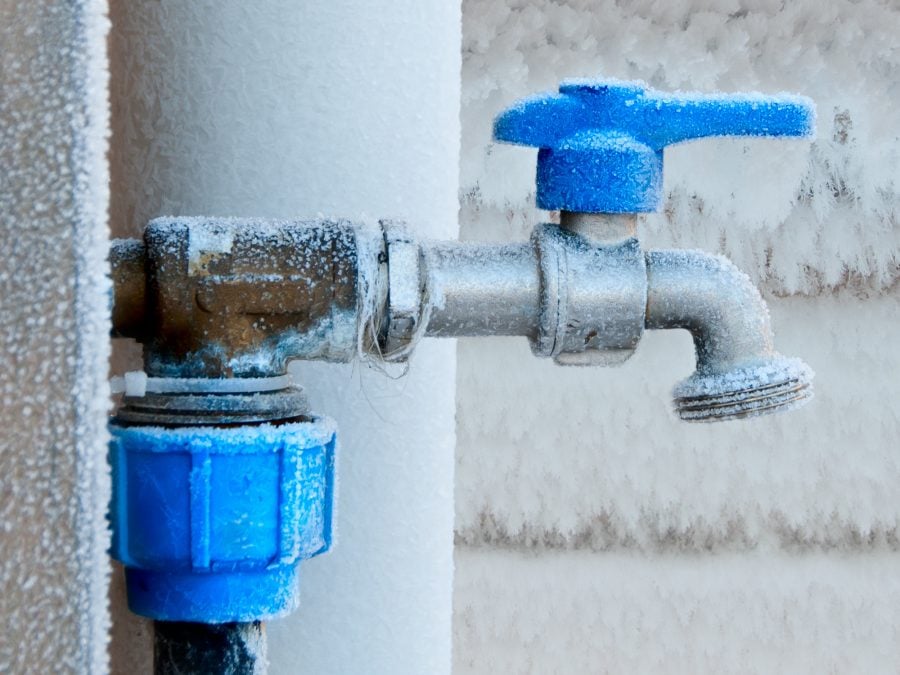The article below on the subject of How To Avoid Freezing Pipes is totally enlightening. Give it a go and make your own assumptions.

Winter can wreak havoc on your pipes, particularly by freezing pipes. Below's how to prevent it from occurring and what to do if it does.
Intro
As temperatures decline, the risk of frozen pipes rises, possibly bring about expensive repair work and water damages. Comprehending just how to avoid frozen pipelines is important for property owners in cool climates.
Recognizing Frozen Pipes
What creates pipes to ice up?
Pipes freeze when exposed to temperatures listed below 32 ° F (0 ° C) for extended periods. As water inside the pipelines freezes, it expands, taxing the pipeline wall surfaces and potentially causing them to break.
Risks and damages
Frozen pipelines can lead to supply of water interruptions, residential or commercial property damages, and pricey fixings. Ruptured pipelines can flooding homes and trigger considerable architectural damage.
Indications of Frozen Water Lines
Determining frozen pipes early can stop them from breaking.
How to recognize icy pipelines
Seek decreased water circulation from taps, uncommon odors or noises from pipelines, and noticeable frost on exposed pipelines.
Avoidance Tips
Protecting vulnerable pipes
Wrap pipes in insulation sleeves or use warmth tape to secure them from freezing temperatures. Concentrate on pipes in unheated or exterior areas of the home.
Home heating techniques
Maintain interior areas sufficiently warmed, particularly locations with pipes. Open cupboard doors to enable cozy air to circulate around pipes under sinks.
Securing Exterior Pipes
Yard hoses and outdoor faucets
Detach and drain yard pipes prior to winter. Install frost-proof spigots or cover outside taps with insulated caps.
What to Do If Your Pipes Freeze
Immediate actions to take
If you suspect icy pipes, maintain taps open to soothe pressure as the ice melts. Make use of a hairdryer or towels taken in hot water to thaw pipes gradually.
Long-Term Solutions
Architectural modifications
Consider rerouting pipelines away from exterior wall surfaces or unheated areas. Include additional insulation to attic rooms, cellars, and crawl spaces.
Upgrading insulation
Purchase premium insulation for pipelines, attics, and walls. Correct insulation assists maintain regular temperature levels and decreases the risk of icy pipelines.
Conclusion
Stopping frozen pipelines requires aggressive steps and fast responses. By comprehending the causes, indications, and safety nets, property owners can secure their pipes throughout winter.
6 Proven Ways to Prevent Frozen Pipes and Protect Your Home
Disconnect and Drain Garden Hoses
Before winter arrives, start by disconnecting your garden hoses and draining any remaining water. Close the shut-off valves that supply outdoor hose bibs and leave the outdoor faucet open to allow any residual water to drain. For extra protection, consider using faucet covers throughout the colder months. It’s also important to drain water from any sprinkler supply lines following the manufacturer’s directions.
Insulate Exposed Pipes
Insulating your pipes is an effective way to prevent freezing. Pipe insulation is readily available at home improvement stores and is relatively inexpensive. Pay close attention to pipes in unheated areas such as the attic, basement, crawl spaces, or garage. Apply foam insulation generously to create a buffer against the cold. You can also wrap your pipes in heat tape or thermostat-controlled heat cables for added warmth.
Seal Air Leaks
Inspect your home for any cracks or openings that could let in cold air. Seal any holes around the piping in interior or exterior walls, as well as the sill plates where your home rests on its foundation. Additionally, make sure to keep your garage door closed unless you’re entering or exiting. Leaving it open creates a significant air leak that can lead to frozen pipes.
Allow Warm Air Circulation
During cold snaps, it’s essential to allow warm air to circulate evenly throughout your home. Leave interior doors ajar to promote better airflow. Open kitchen and bathroom cabinets to help distribute heat consistently around the rooms. If you have small children or pets, be sure to remove any household chemicals or potentially harmful cleaners from open cabinets for safety.
Let Faucets Drip
A small trickle of water can make a big difference in preventing ice formation inside your pipes. When temperatures drop significantly, start a drip of water from all faucets served by exposed pipes. This continuous flow helps prevent the water from freezing. Additionally, running a few faucets slightly can relieve pressure inside the pipes, reducing the chances of a rupture if the water inside does freeze.
https://choateshvac.com/6-proven-ways-to-prevent-frozen-pipes-and-protect-your-home/

I ran across that blog post on Helpful Tips to Prevent Frozen Pipes this Winter while surfing around the web. For those who liked our blog post if you please be sure to pass it around. Thanks a lot for being here. Please stop by our blog back soon.
Click Here